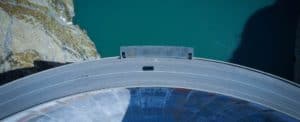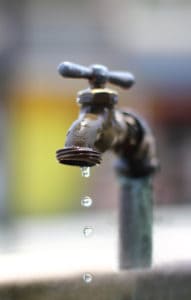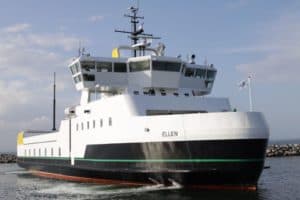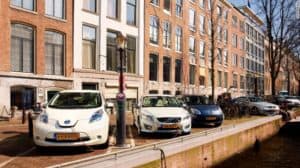Saturday, August 31st, 2019
Stephan: The car industry with very little discussion in the general media, but with growing concern and consternation amongst insiders in the carbon energy automotive world, is undergoing profound change, and it is happening far more quickly than most people have anticipated.

Electric car show
A great website for all transport news electric is Electrek.co. They’ve just posted a thought provoking report on a big change coming at Volkswagen, which is restructuring a gas engine producing factory at Zwickau entirely into an electric car producing factory. The new factory will have an electric vehicle production capacity of over 300,000 cars per year. The first electric vehicle to be produced will be the ID3, an all-electric hatchback, set to launch by 2020. This VW will start at less than €30,000 and have over 330 km of range (about 205 miles). Some versions may have over 500 km of range (more than 310 miles of range).
Electrek.co’s take on this development is what is thought-provoking. Electrik says: “This is great. We are talking about converting a massive plant to electric car production over just over two years. That’s quick. We think this more aggressive approach by Volkswagen, which has arguably been forced onto them after the Dieselgate fiasco, will prove successful and could influence other automakers to do the same. At Electrek, we think […]
2 Comments
Saturday, August 31st, 2019
CARLY CASSELLA, - Science alert
Stephan: Here is a first report on what I think is going to be a growing trend, and I think it is good news.

Hydroelectric dam
Credit: Raphael Biscaldi/Unsplash
If all the hydro-power dams in the United States were removed and replaced with solar panels, it would take up a fraction of the land and produce substantially more electricity, according to a new analysis.
The idea is ambitious, and for now, it’s really just a thought experiment. Today, hydropower is a significant source of renewable energy in the US, accounting for roughly six percent of the country’s total electricity output.
Removing all 2,603 hydro dams in America would leave a huge energy void behind, but it could also provide room for greener opportunities.
While it’s true that hydropower dams are a renewable source of energy, they still produce large amounts of greenhouse gases and can be environmentally destructive and costly to maintain in the long term.
In recent years, these criticisms have led to a growing dam removal movement. And although it’s theoretical, a massive investment in solar power might be able to cushion that loss.
To cover for all the hydro dams currently in use, scientists estimate we would need nearly 530,000 hectares […]
2 Comments
Friday, August 30th, 2019
Jordan Davidson, - Reader Supported News
Stephan: Five years. Everything is happening more quickly than anyone imagined, and the results are worse than anyone projected. Five years, and up to three and a half billion people will see their lives changed. How much social instability, nativism, racism, and violence do you think these changes will cause. Think about the piece on Indonesia moving its capital Jakarta I published yesterday. We are just getting into this.
 World Water Week kicked off this week in the shadow of a frightening reality that nearly one-fourth of the world’s population is living under extreme water stress and in just five years, half the world’s population will live in water-stressed regions, according to the Weather Channel. The dire scenarios circle the globe, from New Mexico to New Delhi.
World Water Week kicked off this week in the shadow of a frightening reality that nearly one-fourth of the world’s population is living under extreme water stress and in just five years, half the world’s population will live in water-stressed regions, according to the Weather Channel. The dire scenarios circle the globe, from New Mexico to New Delhi.
The misuse of groundwater in Indonesia is so grave that the capital city, Jakarta, is sinking, prompting the president there to move the seat of government to Borneo, as CNN reported.
In light of the pressing need to replenish the world’s clean water systems, the 29th annual World Water Week started in Stockholm with the theme Water for Society: Including all. The event, which aims to draw the world’s attention to water-related challenges around the world, is hosted by the Stockholm International Water Institute (SIWI) and supported by the United Nations water programs. UN-Water publishes the annual World Water Development Report.
“Many in our societies are not aware of the vital role that […]
No Comments

 AMSTERDAM — Amsterdam has bold plans to ban all gasoline and diesel vehicles from the city by 2030. But if it is to meet that target, it has only a decade to build the infrastructure to power a city of electric cars.
AMSTERDAM — Amsterdam has bold plans to ban all gasoline and diesel vehicles from the city by 2030. But if it is to meet that target, it has only a decade to build the infrastructure to power a city of electric cars.


 World Water Week kicked off this week in the shadow of a frightening reality that nearly
World Water Week kicked off this week in the shadow of a frightening reality that nearly 








